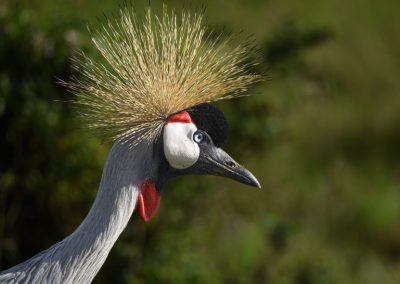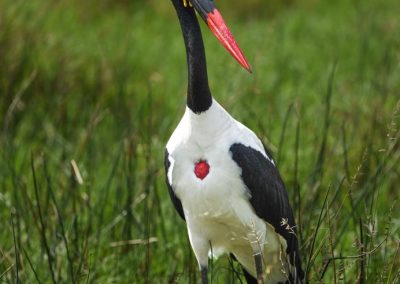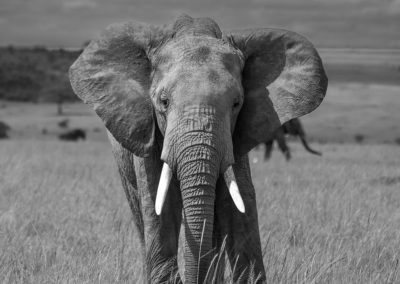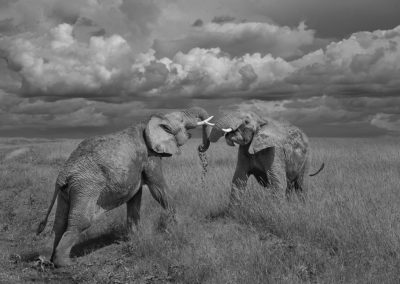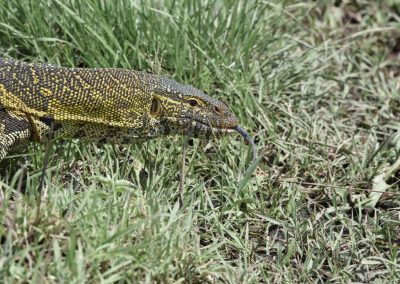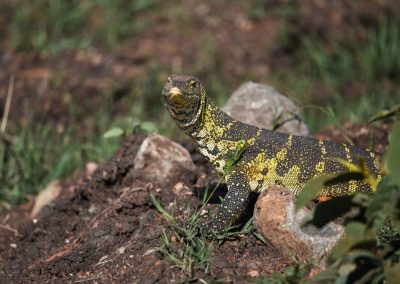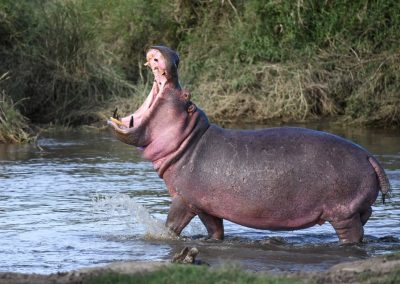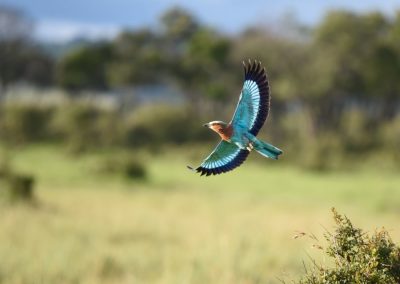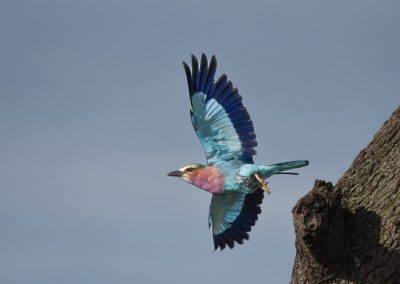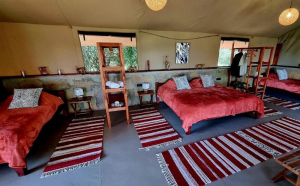The Mara Siria Story: Relishing the Rains
We are now coming to the end of the rainy season in the Mara. Whilst posing some challenges, the almost daily downpours are essential for all life in the park and provide opportunity for sightings you simply can’t witness during other times of the year. They are the reason why the Masai Mara can support such fantastic biodiversity. Here I explore more specifically the changes they bring to the area in the second edition of the Mara Siria Story: Relishing the Rains.

The seasonal rains are the lifeblood of the Mara. They support the lives of all resident animals as well as providing nourishment for the millions of wildebeest that journey here in the famous Great Migration. The marsh areas near to Oloololo Gate have been drenched by the recent downpours. It makes for some challenging driving terrain but the abundance of life it brings more than makes up for it. Hippos cool off in pools right by the roadside and amazing waterbirds such as Saddle-billed Storks and Crowned Cranes are attracted to the plenitude of food.
The majority of the park’s mammals do not enjoy showers. In particular, the big cats tend to shy away and take shelter rather than face the downpour. One animal that relishes the rain however is also the largest found anywhere on Earth’s land- elephants. The wetter the grass the softer it becomes and hence easier to chew for the twelve-molared mammoths. It also makes for some great pictures. The rain washes away mud and dirt from their tusks and they seemingly gleam against the gloomy background.
.
Another creature that enjoys the rain is a lesser-known reptile called the water monitor lizard. Normally residing in the Mara River itself, with plenty of temporary ponds and streams springing up in the park, they expand their territories and can fairly frequently be found roaming the open grassland after a heavy deluge. They resemble the lovechild of a Nile crocodile and snake with needle sharp teeth and a beautiful long, patterned and shiny green body. Also like snakes they taste their environment with their tongue and detect chemical signals with their Jacobson’s organ to observe their surroundings. They also possess a mild venom which helps hunting its small prey but is not seriously harmful to humans.
Hippos are fascinating creatures. They possess the largest canines (teeth designed for tearing flesh) of any animal but only eat grass. They spend 90% of daylight hours in water but cannot swim, instead running along the bottom of rivers and pools. They also manufacture their own sunscreen in the form of a red secretion which helps block the strength of the sun. As a ginger, I can’t help but feel slightly jealous. The rains mean they become more active at this time as they can spend longer away from the river- their usual dwelling place. It is not uncommon to see them walking around on an early morning game drive as they prolong their nightly feeding activity. If it gets too hot for them, they can always plonk themselves down in one of the roadside pools to cool down.
Although the Mara has fantastic birdlife all year round, it gets particularly special during the wet season. The rain boots activity for moisture loving insects which in turn provide abundant food for insectivorous bird species. In particular, sightings of Kenya’s national bird the lilac-breasted roller are frequent. It is believed that the roller’s exceptionally beautiful and bright colours help attract their insect prey to come close to them, much in the same way a colourful flower does for pollination purposes. Although common, any glimpse of this bird and its brilliant blaze of blue is magnificent.
.





